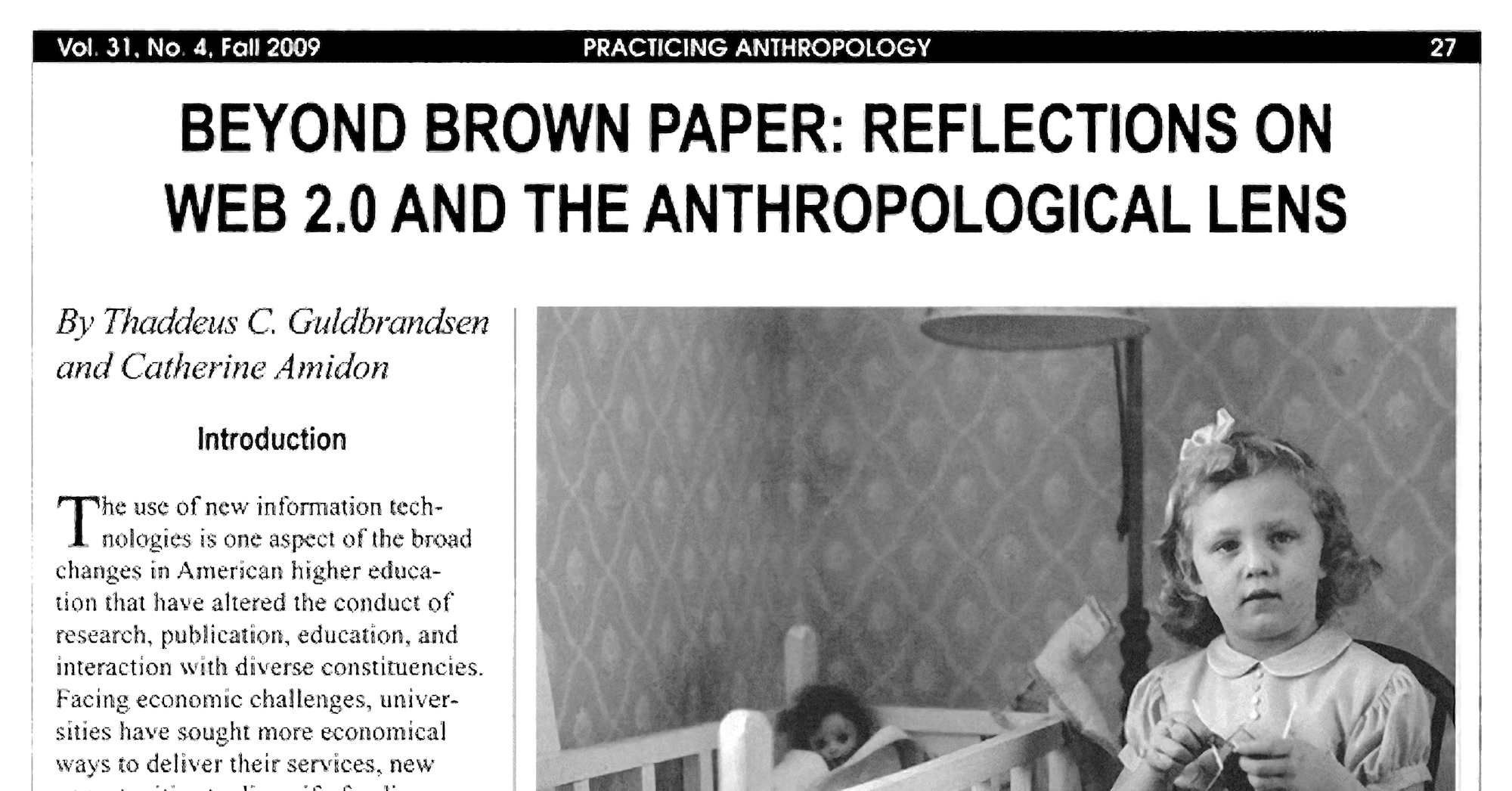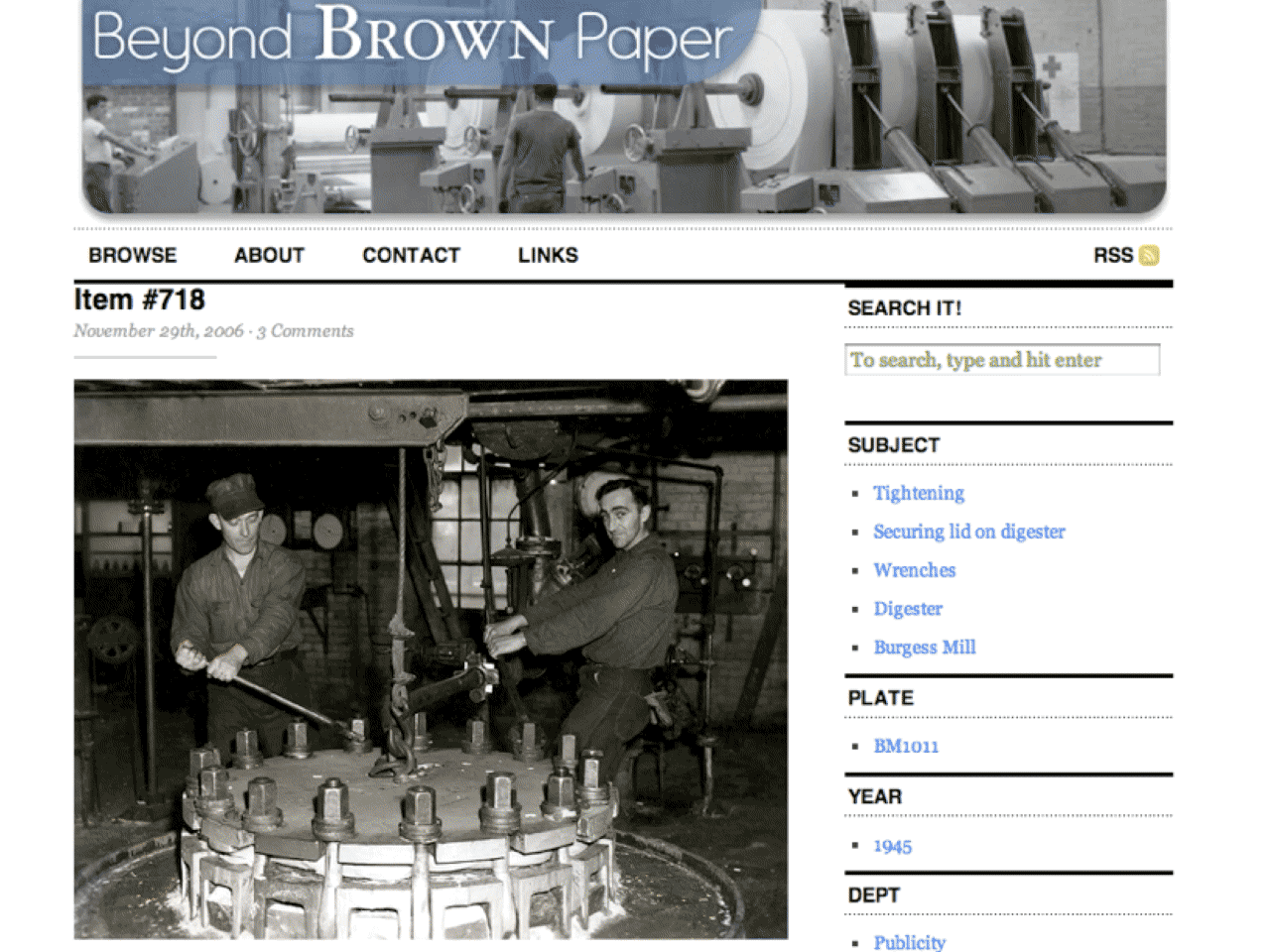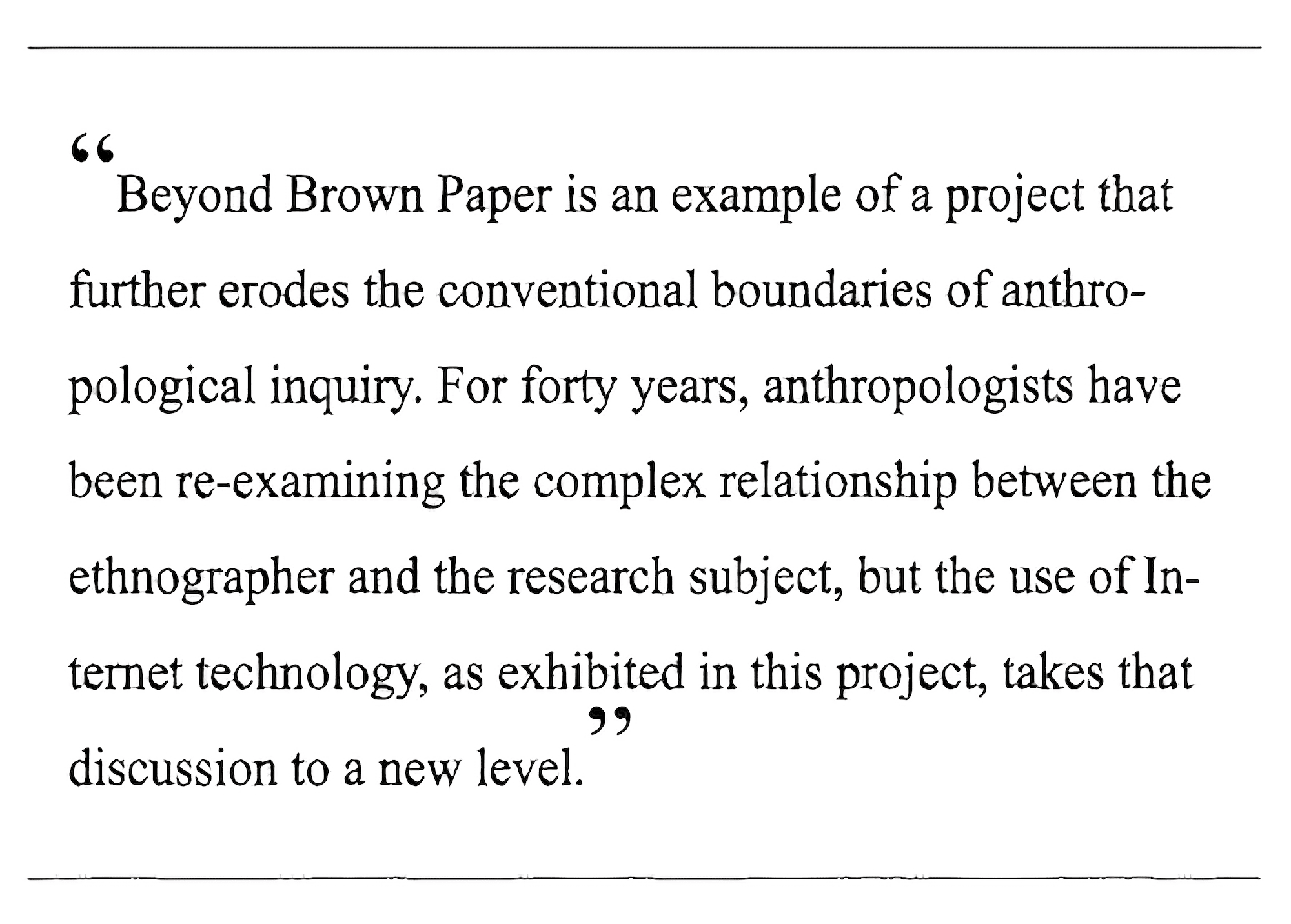“Beyond Brown Paper: Reflections on Web 2.0 and the Anthropological Lens,” by Thaddeus C. Guldbrandsen and Catherine Amidon, has just been published in The Journal of Applied Anthropology. Their paper focuses on the opportunities for participatory anthropology made possible by public, web-accessible archives. The basis of their work is the Brown Paper Collection, an archive of historical photos presented on the web using Scriblio (formerly WPopac)1.
This discussion examines these concerns within the context of one online experiment: Beyond Brown Paper is an interactive photo exhibition that raises a number of conceptual and methodological questions related to the practice of anthropology in the the Internet age. Beyond Brown Paper suggests the that the use of information technology in anthropology further blurs the distinctions between the observer and the observed.
Scriblio, a new software “mashup” that combines data and computer functions from external sources was developed at PSU by Casey Bisson. In this case the mashup combines blog technology and library software to enable multifaceted communication on library web pages and integration with the rest of the web. This software, combined with improved digital photography scanning technology, made it technically feasible to provide large-scale public access to the Brown Company photos.

A sample of the article as it appeared in The Journal of Practicing Anthropology’s fall 2009 issue.
Browse the collection and experience Scriblio here. Additional collections include Colby-Sawyer’s archives, Tamworth Public Library (including this wonderful discussion), Plymouth State University’s Lamson Library, and a number of others in development.

Crowdsourced history at the archives of the former Brown Company, erstwhile manufacturers of paper and paper products.
One of my favorite examples from the Brown Paper collection is this picture of two men working. In a series of comments we learn the names of the men, the location, and the industrial process they were working on from people who worked the mills, and their family.
As Guldbrandsen and Amidon point out, “for forty years, anthropologists have been re-examining the ethnographer and the research subject. But the use if Internet technology, as exhibited in this project, takes that discussion to a new level.”

A pull quote from the article as it appeared in The Journal of Practicing Anthropology’s fall 2009 issue.
Scriblio evolved from my experiments with faceted search and efforts to bring internet-native social features and ease-of-use to archives and library collections. That work was recognized by the Mellon Foundation and earned me a cringeworthy namecheck on TV. ↩︎